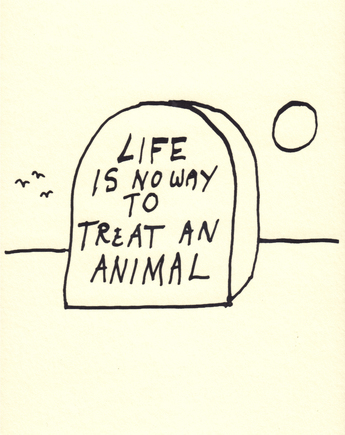-
From Issue 121
-
- Editor’s Letter Practices of Realignment
- One On One Raja’a Khalid on Kurt Vonnegut
- Tribute Picture Window with Two Chairs. In Memory of Siah Armajani (1939–2020)
- Essays The ecological flows of Yukihisa Isobe
- Profiles Irene Agrivina
- Reviews Hương Ngô
- Reviews A Slightly Curving Place
- Table of Contents
- Web Exclusives
- Archive
- Subscribe

R
E
V N
E
X
T
The first Kurt Vonnegut book that I ever read was his memoir, A Man Without a Country (2005)—incidentally, the last title that he had promised to write and publish. It was 2006, and my father had picked up a copy from an airport. After reading only a few pages, he declared Vonnegut as an essential voice for our time, which was, back then, five years deep into the “War on Terror.” I was 21, fresh out of art school, possessing more than the requisite rage, but able to exhibit only bewilderment at what I had concluded to be humanity’s capacity for inhumanity. Becoming an adult meant reconciling irreconcilable human endeavors; we could write poetry about daffodils, for instance, and build unwieldy regimes of mendacity and barbarity.
I found the memoir on my father’s shelf a few weeks after I saw him waving it around. There was a bookmark tucked in the middle, which opened to a page with a cartoon drawing of a tombstone with an epitaph. It said: “Life is no way to treat an animal.”
That’s all it took. Vonnegut had me hooked. I was a hopeful cynic in the making and badly needed a voice that mumbled gruffly to me. I read A Man Without a Country from cover to cover in a day and a half and then grabbed copies of Timequake (1997) and Breakfast of Champions (1973) to confirm my suspicion that Vonnegut was a witty genius and a writer not only without a country but also without a time—the kind of social critic young art students need to learn about when they begin to ruminate on the type of political leverage their work could potentially have in the future. Vonnegut was seemingly skeptical about art’s influence on politics; in his biography, he even likens the impact of anti-war efforts by artists during the Vietnam War to a custard pie falling from a ladder. And yet, he undercut his own political disenchantment by remaining relentlessly humanist and partisan to an active politics of decency, in turn producing a lifetime of fiction that embodies a tireless advocacy for kindness and empathy over all else.
I turned to Vonnegut’s storytelling to better understand the virtues of comic relief and its best, most appropriate deployment when creating work around histories or situations that are difficult to digest. Like mini masterclasses on the craft of irony, his novels are first-rate tapestries made up of bizarrely absurdist plots and twists, building up at times to the most ludicrous climactic crescendos. Heartbreaking and hilarious in equal measure, they often mix popular sci-fi tropes like time travel with biting satire to raise questions about moral and ethical problems very much rooted in our life here on this earth. Free will or lack thereof, war, violence, power—the heaviest of the heaviest philosophical concepts are broached consistently. And yet, the stories are always funny. Turning a page of a Vonnegut novel can bring you face to face with a drawing of a bucket of fried chicken or an ancient torture device, as in Breakfast of Champions, but either way, he’ll use a coalition of linguistic deftness, gallows humor, and care to pinch you in a way only something truly conflicted and human can.
Over the past years, I have come to lean on Vonnegut’s books to get me out of the impossible corners that life sometimes puts you in. Two years ago, I hugged a copy of The Sirens of Titan (1959) and wept a little as I read the closing chapters, inconsolable because fate had thrown me a violent curveball I hadn’t anticipated. It felt right. Earlier this year, I read out a passage from Slaughterhouse Five (1969) in a characteristically bookish attempt to flirt, and all I can say here is that it actually worked. It was the bit where the protagonist Billy Pilgrim gets unstuck in time and watches a war movie as it plays backwards. Soldiers run around pulling bullets out of wounded bodies, making “everything and everybody as good as new.” As my own practice now turns increasingly to diaristically driven short fiction, I return once again to Vonnegut to better understand how to satirize one’s own life since he was a master of that craft in particular. When invited to think about who I would like to write about here, I hesitated a little and debated in my head about how culturally savvy it was for me to profile Vonnegut. After all, what could a Saudi-born, Muslim, South Asian female artist writing about desire and alienation have to learn from a crusty old White guy from Indianapolis? A lot, it seems. Vonnegut was an artist for all seasons.
SUBSCRIBE NOW to receive ArtAsiaPacific’s print editions, including the current issue with this article, for only USD 100 a year or USD 185 for two years.
ORDER the print edition of the November/December 2020 issue, in which this article is printed, for USD 21.







